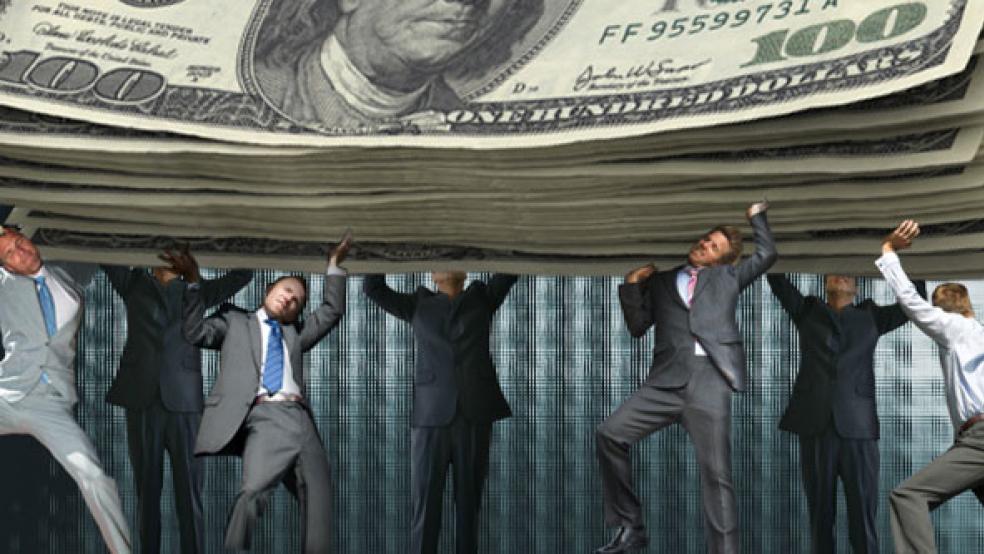The Federal Reserve and its central bank counterparts worldwide have engaged in years of extraordinary monetary interventions to boost asset prices and lower interest rates. Yet overall economic performance since 2008 has been sluggish at best. Many observers have offered ideas for why monetary policy has been so ineffective since the Great Recession. But last weekend, University of Chicago economist Amir Sufi decided to take his theory to the belly of the beast, giving a lecture at the Bank of International Settlements, an organization known as the “bank for central banks.”
The main problem, Sufi argues, is that the people most aided by central bank policies didn’t need the help. In the lecture, he cites a 2012 Wall Street Journal article about the “credit divide” within the country, quoting one well-off homeowner who refinanced his house three times in 17 months. “If you don’t need the money, you can get it all day long,” the homeowner said. “Thank you, Ben Bernanke.”
Related: Why So Many Americans Are Trapped in ‘Deep Poverty’
To step back a bit, let’s examine how central banks try to revive economies. They mainly try to lower interest rates in a variety of ways. This entices consumers to borrow cheaply, spurring more economic activity. Plus, consumers can refinance into lower interest rates on their current loans, saving them money that they could choose to spend. Without high returns from safe assets like Treasury bonds, investors push capital to business investment and other economic pursuits. And finally, banks with low borrowing costs can increase access to credit for individuals and small businesses.
Loose monetary policy has worked throughout recent history, but not since 2008. Take for example mortgages, the largest consumer financial product in the economy. Thanks to Federal Reserve actions, typical U.S. mortgage interest rates dropped from 6 percent to 3.3 percent from 2008 to 2013, even as the main federal funds rate was stuck at zero. Sufi uses this to discount the “zero lower bound” hypothesis as a cause of ineffective monetary policy: Through quantitative easing and other measures, the U.S. was able to reduce key consumer interest rates.
Yet housing didn’t contribute to economic growth in those years. That’s because too many households were locked out of accessing the low rates. They either lost their homes to foreclosure, or were “underwater,” owing more on their mortgages than the house is worth. As of March 2012, 70 percent of mortgage borrowers were paying interest rates of 5 percent or higher, even though the market rate was 3.8 percent.
The only people left to benefit from refinancing or purchasing mortgages were high-income earners with good credit scores, who have a lower “marginal propensity to consume,” meaning that they are more likely to save additional dollars than spend them. Citing research correlating high-debt households with higher propensity to consume, Sufi concludes, “The inability of heavily indebted borrowers to refinance has depressed spending.”
Related: How Saying 'No' Can Save Your Retirement
There are two other points worth making here. One, lower-income borrowers with life savings wrapped up in their homes were more gun-shy to alter their situations, given all the horror stories about denied loan modifications and mortgage servicer abuse. So a lack of trust in the banking system played a role. Second, the key to monetary policy trickling down to the public through lower interest rates was a broad middle class, without negative balance sheets and financial stress. But increases in inequality hollowed out that middle class, leaving more on the wrong side of the divide, deep in debt and unable to boost their spending. And these are the households central bankers rely upon to make their actions work.
Sufi finds more evidence beyond mortgages. Lenders are unwilling to supply credit to borrowers with large amounts of debt, who happen to be the ones most likely to boost spending. Whatever bonus these households do get from lower interest rates goes into paying down debt. Consumer debt in the Eurozone area, for example, has fallen every year since 2010. Investors do well from stock returns but not enough of those profits get converted into spending. So monetary policy since the crisis “has channeled interest savings and additional credit to exactly the households that are least likely to change their spending in response,” Sufi says.
Central banks assume their interventions will work because they fail to account for the changes in our economy, where low wages have created masses of people financing their daily lives through debt. They cannot capitalize on interest rate reductions the way they have in the past.
Related: The Pain the Job Numbers Don’t Show
That doesn’t mean there’s no role for central banks, however. Sufi argues that the negative shock of higher interest rates amid a recession would be more painful than the modest impact of lower interest rates, so he doesn’t counsel a rapid return to tighter monetary policy. And because monetary interventions have less impact, the parade of horribles that conservatives have consistently warned about — fears of runaway inflation, for example — have not come to pass.
But central banks need to realize that they cannot just lower interest rates and raise asset prices and expect that will suffice to return economies to robust growth, if those policies don’t reach people who will spend. The biggest thing they can do, Sufi explains, is to set conditions so households don’t fall so deeply into debt to begin with. That means ensuring that financial regulation protects consumers from debt traps. The Fed’s macro-prudential bank supervision, then, can improve how they keep the economy in balance.
Related: The Problem with Completely Free Markets
If too many people fall into debt anyway, then aggressive debt relief is the best way for the economy to bounce back, relieving this clog in the distribution of monetary policy benefits. As we know, the U.S. ignored this policy idea after the recession, using a poorly designed loan modification program that did little for homeowners on their biggest debt burden. Not only did that leave millions to suffer, but it helped cancel out central bank activities and stunted economic growth.
If you follow this logic, policies that reduce inequality would also help enormously. A family that earns a decent living doesn’t have to go into hock to keep up with their monthly budget. They therefore maintain a stronger balance sheet and lower debt burden when times are tough, and Fed policies can more easily reach them. Inequality spurs household debt, and household debt spurs financial shocks and longer economic downturns. Therefore, the challenge of reversing inequality doesn’t just affect those losing out in the modern economy — it affects every one of us.
Top Reads from The Fiscal Times:
- Jeb Bush Wasn’t Bashful About Trading on Family Name
- How the U.S. Is Helping to Sink Puerto Rico
- Company that Fled U.S. Over Taxes Now Wants Feds’ Help






